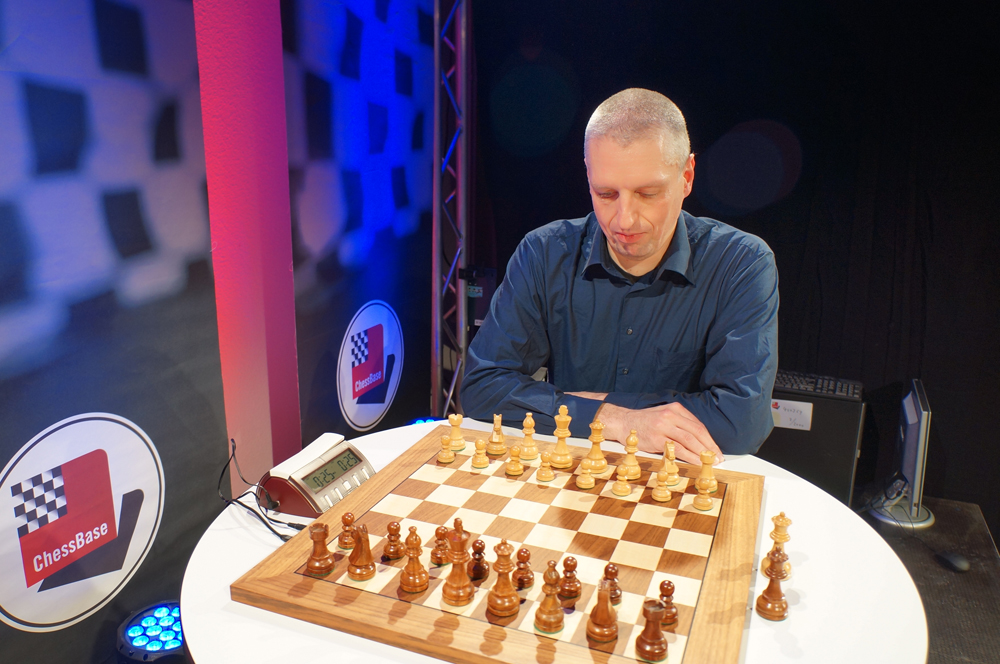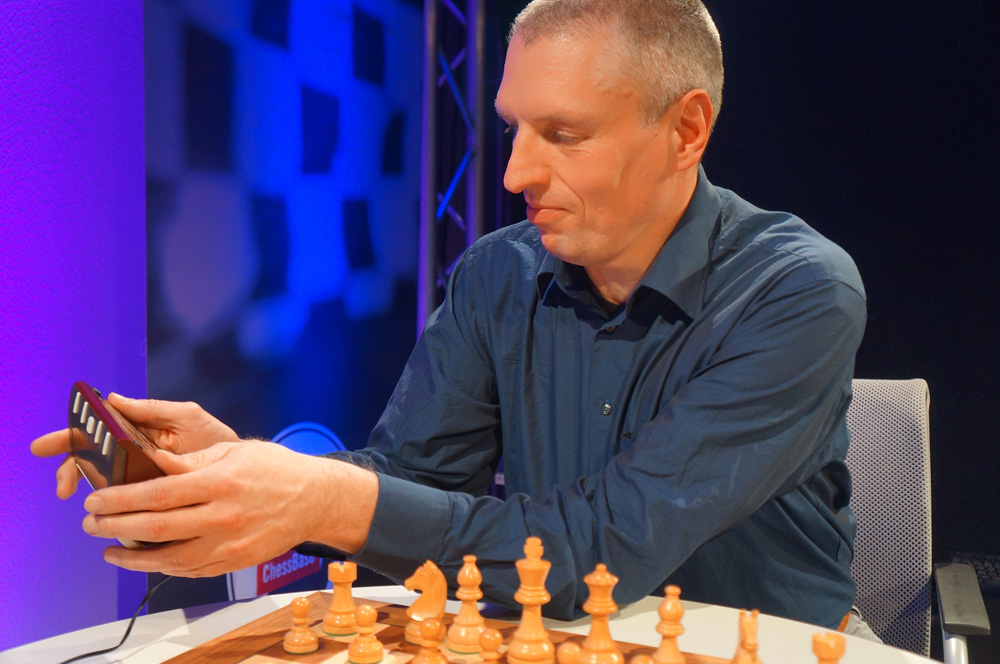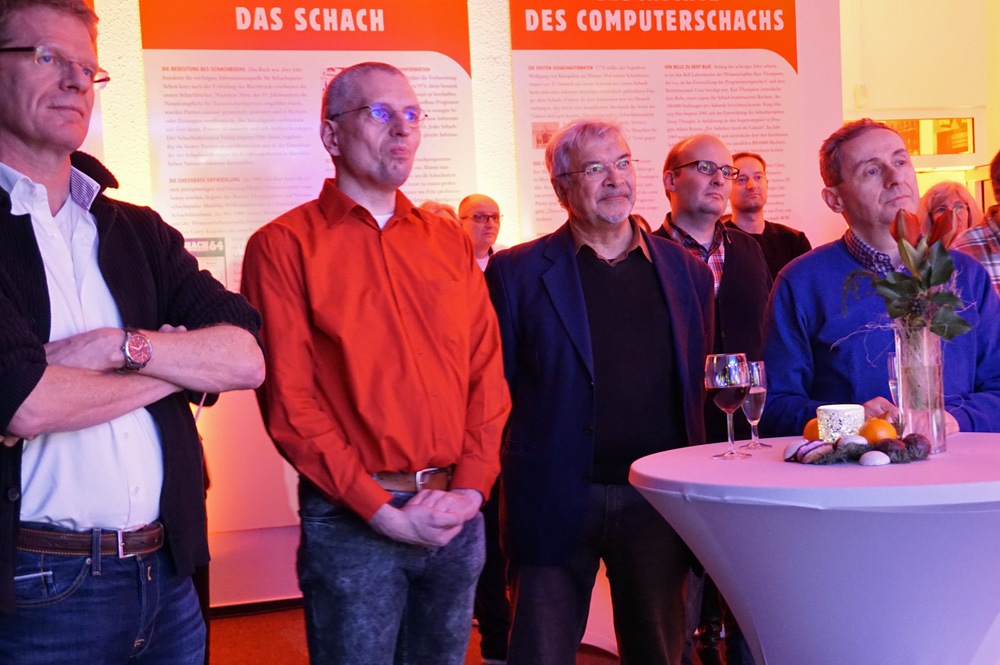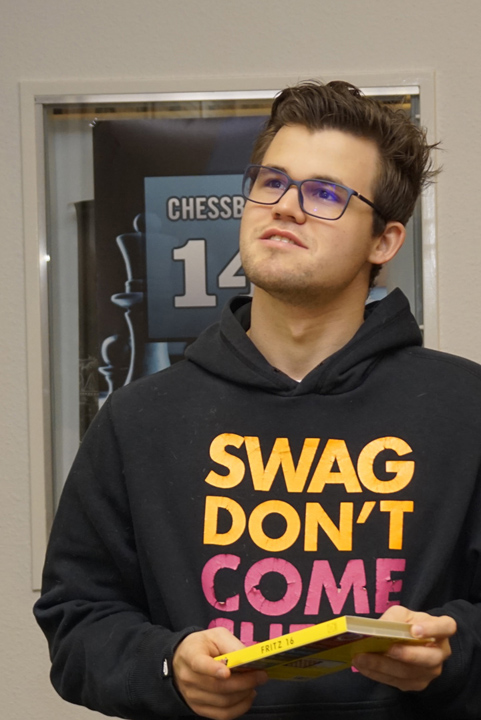


Originally published in the Spanish chess magazine "Peón de Rey" (March/April 2018), and reproduced with kind permission
Jorge I Aguadero Casado (Peón de Rey): As a child, were you a good student? What were your first steps as a computer scientist? Why did you choose chess as a field of study for your skills as a programmer?
Mathias Feist: My marks were always excellent. In this aspect, I always was a very good student. During junior high school in the late 70s a teacher offered a voluntary class for programming on the school computer. I was immediately fascinated and after a short time I was the only pupil in my school with a key to that room and kept it until I graduated from high school.

Mathias Feist | Photo: Nadja Wittmann (ChessBase)
I played chess and I was interested in programming, especially in programming games. Chess was amongst them. It started with a mate solver and after I met Matthias Wüllenweber with storing games. During my time on university I also implemented an early and by todays standards very simple formal language interpreter. It all came together. I didn’t plan it, it happened.
In the early 80's, your friend Franz Morsch and you called the attention of the Chessbase company with the Knightstalker program. In what sense was it innovative? Did it establish the basis of what the Fritz project would become or was it another kind of software?

The goals that you set yourself at the beginning of the "Fritz project", were they very different from the ones you have today?
I first met Frans in 1991. We had ChessBase and wanted to make a chess program. For that, we contacted Frans and created Fritz. Knightstalker was a different name for Fritz for the American market.
Fritz was the first program to use the null-move recursively in the search. When we were set to work on the program, our plan was to beat the world champion within 15 years. This worked out like a charm, in 2006 we won against Kramnik in Bonn. Of course, our goals are different now, playing strength is just there.
How many people work in the creation of a new Fritz? In what areas of work do you distribute?
This is hard to quantify, depending on how you define these areas of work. The GUI is basically made by four people. But there are also the engine, the artwork, the translations, the documentation, the servers, the websites, etc…
I’m working mainly on the GUI, servers, and installers. But lately also on web stuff.
In 1994 Fritz was the first program to obtain a FIDE international master title. What did that mean to you?
It was a step in our 15 years plan. We were on track.

In 1999, Fritz “visited” the Russian “MIR” space station, which was destroyed in 2001 after having been in space for 13 years and the home of many successful experiments even after having survived a fire on board in 1997 | Photo: ChessBase
The great challenge that humanity faces throughout this century is the evolution of artificial intelligence. In what sense are you influencing this process with the development of your software? Is it overwhelming?
I think the way chess was trained and played changed when I invented the concept to have an engine always analysing the current position while playing a game. It was a huge change. Another aspect was that access to chess games became much easier for everyone.
Today ChessBase constantly becomes more powerful. With better computers and faster internet new kinds of access to chess information becomes accessible.
Could you tell me an anecdote about the work with Fritz that has not been published?
We took a step forward taking on the 1995 World [computer] Chess Championship in Hong Kong. In Hong Kong, we were playing on the slowest computer in the tournament. We used a computer provided by the university. But Fritz was tactically very strong and positionally solid.
What made Fritz stronger than the others? Fritz 6.0, with an Elo of 2607, was the first program to break the 2600-point barrier. How did you celebrate it?
I don’t think we really out-computed the “big” machines like Star Socrates or Deep Thought [later Deep Blue]. But in some situation, our evaluation just seemed to have been better. On the other hand, Fritz’ search was really deep in some lines. It was another step in our 15 years plan. We were still on track.
The tie with Kramnik in 2002 was your a big success against a FIDE world champion. The engine had learned to play, in only two decades, like the best of humans. Did this learning curve correspond to your expectations?
Yes. But it was only one decade.
What conclusions did you draw from the tie with Kasparov in 2003?
Coming up level with the top players was one thing. Beating them was another. There still was something missing to overcome the top player’s ability to not lose.
Fritz continually updates its technology. The possibilities of the current software are huge. Have you evaluated the possibility of any kind of virtual reality for domestic use, with your glasses and the kit that complements them, for a future update?
We have tried a few experiments with that.

Mathias Feist (in red) with flanked by ChessBase co-founders Matthias Wüllenweber and Frederic Friedel | Photo: Nadja Wittmann
In Bilbao (2005), three former world champions were defeated by computers. Do you think that this type of event still makes sense or today’s engines are out of reach for humans?
No, it does not make sense anymore. Computers are no longer competitors to humans, but tools to analyse games.
The victory over Kramnik in 2006, was it an expected result or did the human still have real possibilities against the strongest engine? Did you feel the uneasiness of ending one of the last romantic redoubts of the supremacy of our thinking or, on the contrary, did you see yourself as a pioneer who helped human ingenuity to discover new paths?
We reached our goal! We were happy and sad at the same time because we knew that the era of matches against top players was over. We played on rather standard hardware, everyone could have such a computer. World class playing strength had reached the main stream.
What did you learn after losing the match against Deep Junior in 2007? Your strategy, at the beginning of the century, was to challenge the best players in the world. Today, with the supremacy of computers, what is your challenge?
There were areas in the program which had to be improved, especially unbalanced positions. Today we are working on improving the extraction of chess knowledge from databases. For this task, strong engines are also useful, but they are only one aspect of it.
What room for improvement do current chess programs have? Have they reached a level of play that is not worth enhancing or are there new challenges? Is it expected that the upcoming arrival of quantum computers will significantly affect the evolution of chess programs?
I think there is always room for improvement. Chess programs are far from perfect. For example, evaluating long-term dynamic factors is very difficult. And as long as there is room, it will be tried.

Magnus Carlsen, with his copy of Fritz 16 | Photo: Nadja Wittmann (ChessBase)
What new features does the new Fritz 16 introduce from a conceptual point of view? What is the level of demand every time ChessBase approaches the improvement of a new Fritz?
For several Fritz versions now we are moving towards a training tool for the average chess players, apart from providing training tools also for the top players. We try to model such an average player. Game analysis has improved a lot, interesting playing and training levels have become better. This is a much less clear area of work compared to improving the playing strength.
In words we can all understand: how does Fritz 16 "reason" its moves? Do you do it like your predecessors or has the position analysis evolved since you first released your first software?
Fritz 16 is not a revolution, but an evolution in big steps. The basic ideas are still the same, but they have improved a lot and since the first version a lot of new ideas were implemented. How is a move selected? Well, that is hard to explain without being too technical. Basically forced lines are played out and the resulting position is evaluated statically (the easiest one is material) and dynamically (for example activity of the pieces). The best is selected.
How do you “teach” positional chess to an engine? How important is this positional knowledge in respect of the engine’s brute force of calculating?
We are trying to find positional weaknesses in the engine and come up with a solution. Then it is tested. Often intuitive solutions don’t work because the engine finds a way to circumvent them.
World Champion Magnus Carlsen visited your office. How did you feel about it?
I was looking forward to meeting him. He is an interesting person, also apart from chess.
And finally, what do you think about the "AlphaGo" development by Google? Does it bring something useful to the chess software?
Not directly because currently nobody can repeat and analyse the experiment. But the published games were very interesting. Obviously, it is possible to have a program with a much better understanding of dynamic features.
Thank you very much, Mathias.
Interview: Jorge I Aguadero Casado (Peón de Rey)
Photos: Nadja Wittmann (ChessBase)